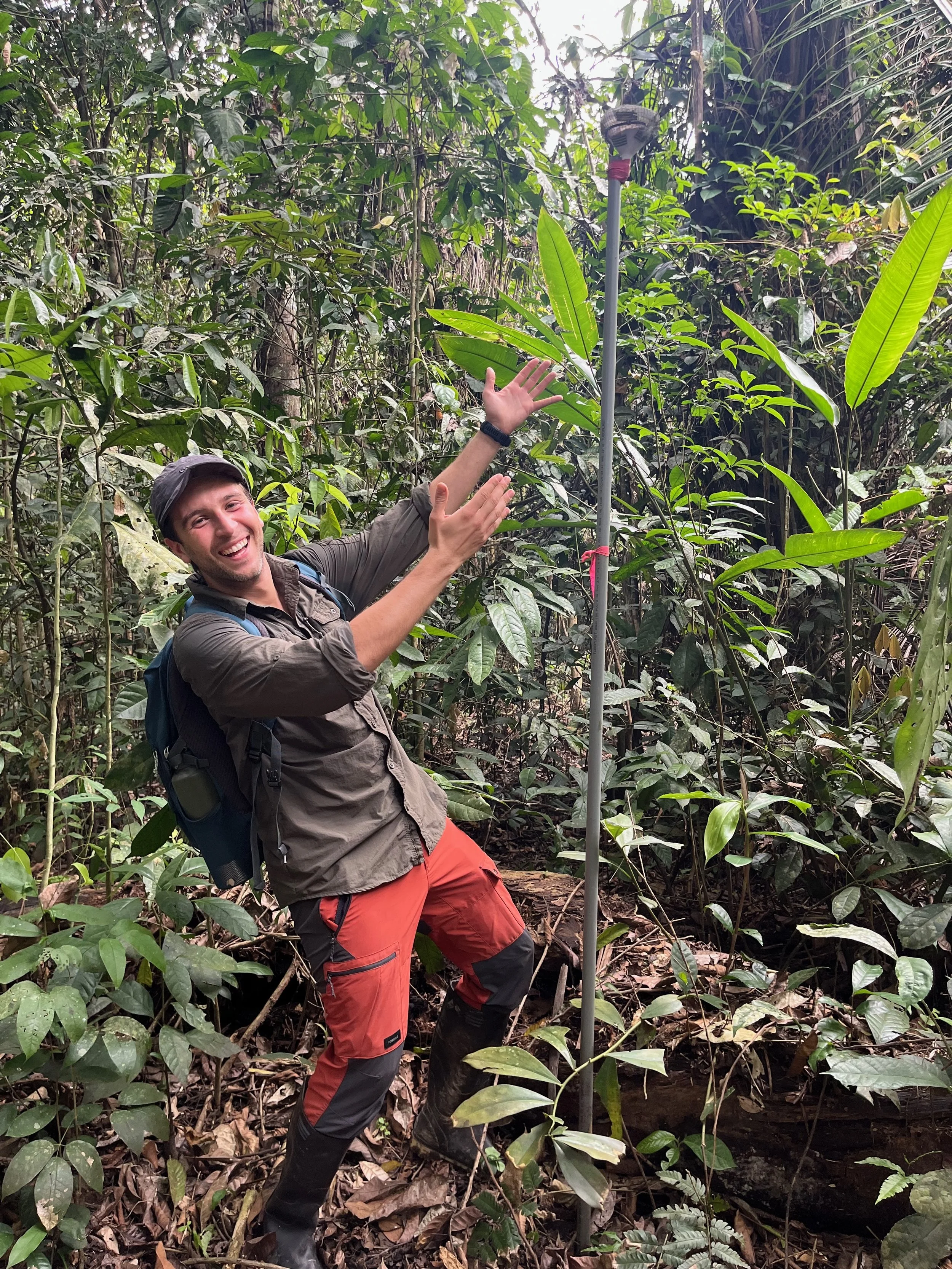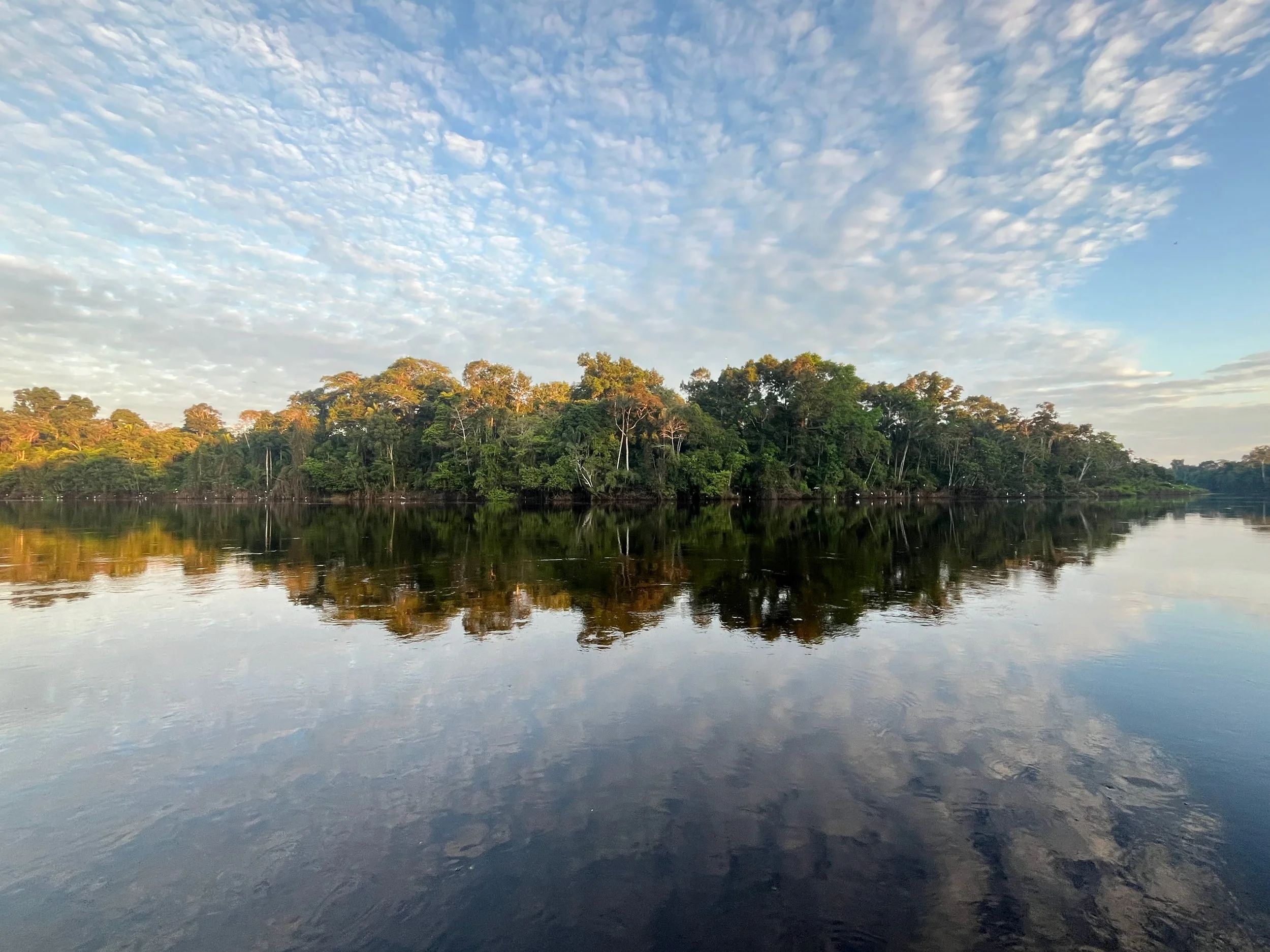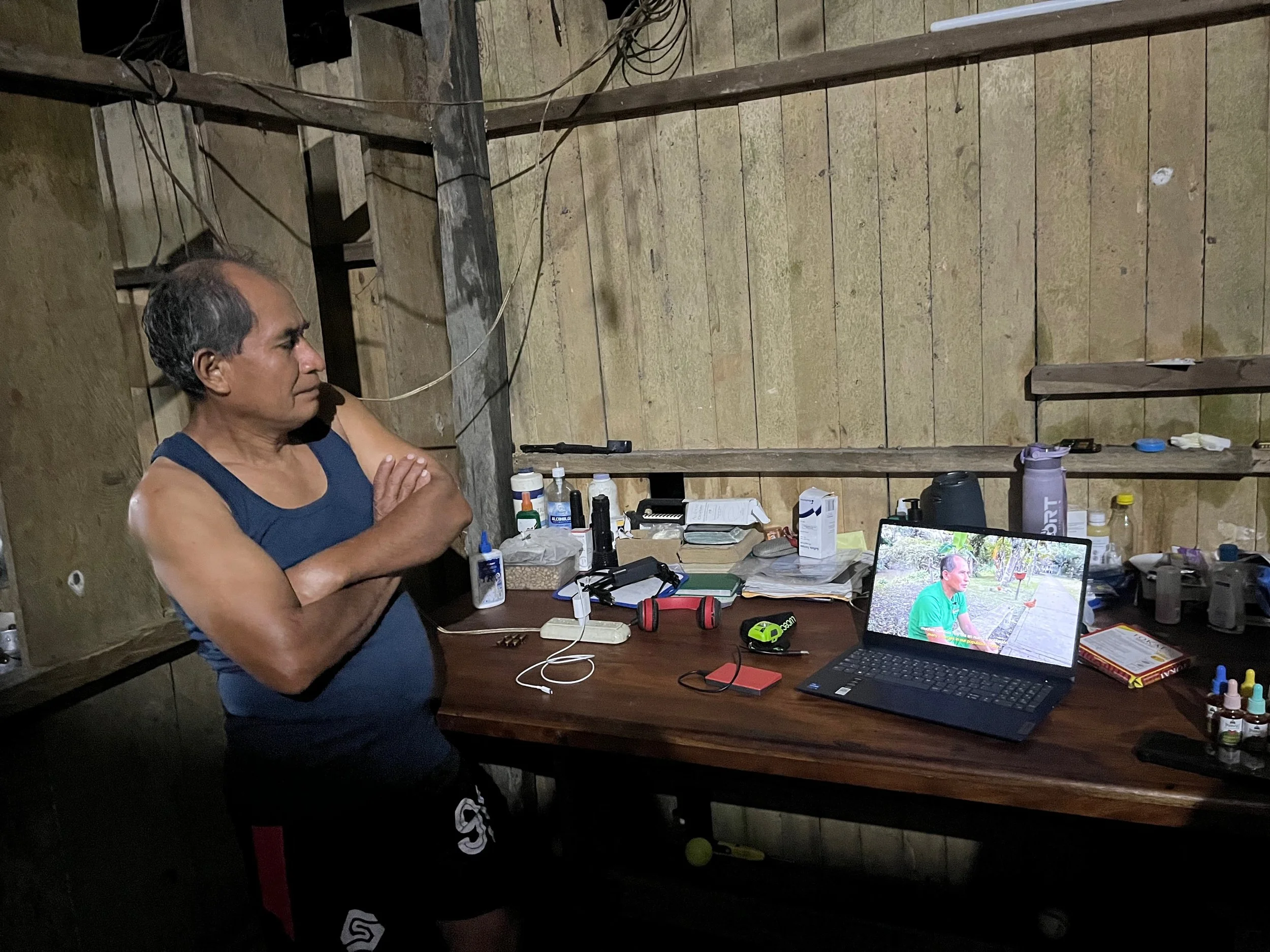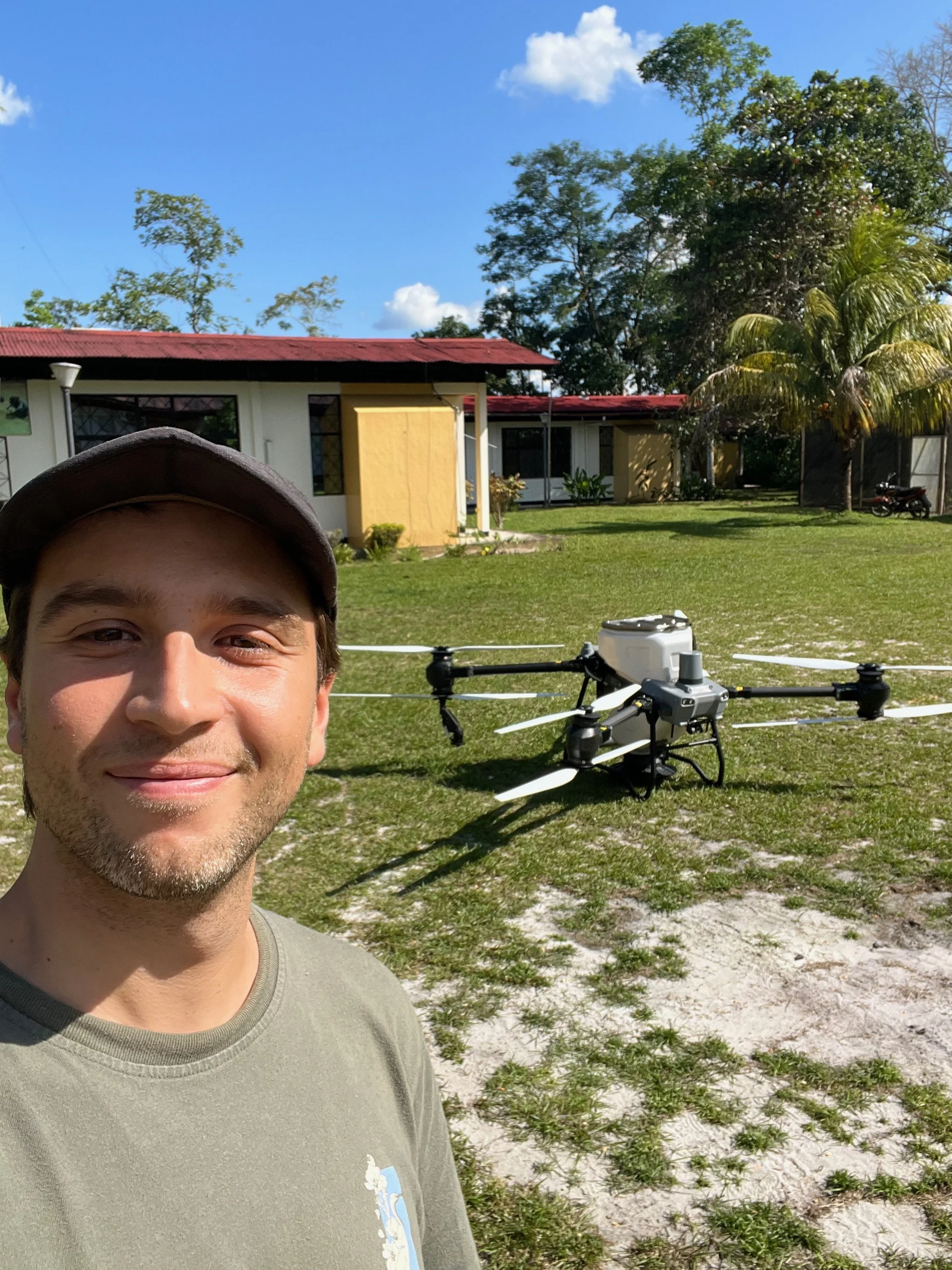Peru Fieldtrip 2025
Hello everyone!
I’ve just returned from three and a half weeks in the Peruvian Amazon, which as always has been incredible. It was an intense but productive trip, focused on collecting pollen traps that we installed last year in our various sites across the Pacaya Samiria and Allpahuayo Mishana national reserves. Despite a few logistical challenges, we managed to complete the majority of what we had planned.
The trip began with a short stay in Lima-this step is necessary in case the suitcases are delayed or lost during the outbound flights (which is what happened last year), but luckily this year the gods of aviation were merciful and all my suitcases made it! I then continued on to Iquitos, where I met up with Gabriel, Ander and our collaborators at IIAP.
From there, Ander and I travelled to Nauta and joined our dear friend and boat driver Pepe, for the journey upriver to the village of Veinte de Enero, where some of our plots were located. Our goal was to collect all the river traps installed during last year's campaign. Compared to last year, this trip moved at a different rhythm. It was all much faster and simpler-we weren’t doing any soil sampling or forest surveys this time, so the fieldwork unfolded in a more streamlined way, and this was pretty much the case for every site. It was a relief to find that every single trap had remained in place and was in excellent condition—always something of a gamble in these changing environments where many variables can disturb the traps or lift them out of place. We also set up a new set of river traps and left them there to collect samples over the course of the next two weeks—more on that in a while.
On the way back to Iquitos, we made a brief stop in Quistococha to collect the lake trap there, which I was so surprised to find still floating in the same position a whole year later. This will be such an interesting sample once I process it, as it will enable us to understand the deposition of pollen in lakes over the course of a known amount of time.
We then spent the following day in Allpahuayo-Mishana. In one very long day, we managed to visit all three of our plots and collect the traps. A storm caught us midway—one of those sudden downpours that leaves you completely soaked within minutes—but we collected all the traps which made the day of hard work totally worth it.
After that, I had to pause for a few days. I took a bad fall and landed hard on my ribcage, which earned me an unplanned visit to a local clinic. Thankfully, nothing was broken—just some deep bruising and enough pain to make rest absolutely necessary before heading back into the field. It was frustrating to be briefly sidelined, but in the grand scheme of things, I was lucky. If something had to go wrong, at least it wasn’t serious. I was back on my feet (albeit a bit crooked) before long.
Once back on my feet, we made a five-day trip to Parinari and Tachshacocha, the heart Pacaya-Samiria Reserve. Water levels were still unusually high for the time of year, with flooding retreating more slowly than expected. Because of this, we weren’t able to access the lake trap in Samiria—it was still fully submerged. Still, we collected all the aerial traps, so another success there. But the high water brought with it other sights: white egrets flying in flocks of hudreds like I had never seen before; river dolphins were present almost every day, moving quietly through the flooded forests; beautiful landscapes reflecting in the blackwater rivers. It was a reminder of how much variability these systems experience from year to year.
Other than collecting samples, it was also lovely to return to the communities of Veinte de Enero and Parinari and reconnect with people. One of the most meaningful moments of the trip was being able to show the short documentary we filmed last year to some of the locals who had participated in it. We were only able to show them on my laptop, which is not quite as impactful as the big screens we have been able to show it on here in Barcelona, but it was a memorable experience nonetheless—people gathered to watch, curious and smiling, spotting themselves and their neighbours on screen. It was such a warm and generous moment, and it felt like a small but important way of closing the loop, sharing something back with those who had shared so much with us. Their reactions reminded me why this work matters beyond the data analysis and papers.
After returning to Iquitos, with most of the main tasks complete, I had a few extra days before our final visit to Veinte de Enero to collect the river traps. I took the opportunity to spend time at a lodge just outside the city—Purachata—where I finally sat down to write up one of the papers from my PhD that had been sitting on my shelf for too long. The change of pace, and environment, helped me focus, and it felt good to make progress on something that’s been quietly waiting for attention.
We closed the trip with one last journey upriver to collect the new river traps from Veinte de Enero. With a bit of time left over before my flight back, we also deployed new traps along the Nanay and Amazon rivers—two key additions that will expand our network and hopefully provide some interesting data for comparison over the coming year. I was also able to attend part of a small workshop run by IIAP on flying the huge drones they have just aquired, DJI Agras, which are able to carry 50kg and wil be used to disperse seeds in unaccessible areas of the forest for reforestation purposes—so fun and such a good initiative!
Now back in Barcelona, the next few weeks will be dedicated to lab work to process the newly collected samples, and continuing the data analysis that’s already underway. There’s a lot to sort through, but I’m looking forward to diving into the material and seeing what stories begin to emerge. This trip also marked a major milestone: it was the final field campaign of my MSCA project. That brings a real sense of achievement, but also feels a bit bittersweet—not knowing when I’ll be back in the Amazon is a strange thought. For now, I’m heading back to the lab with plenty of samples, lots of data to dig into, and a long list of questions to keep me busy.
Stay tuned!
–Dael









